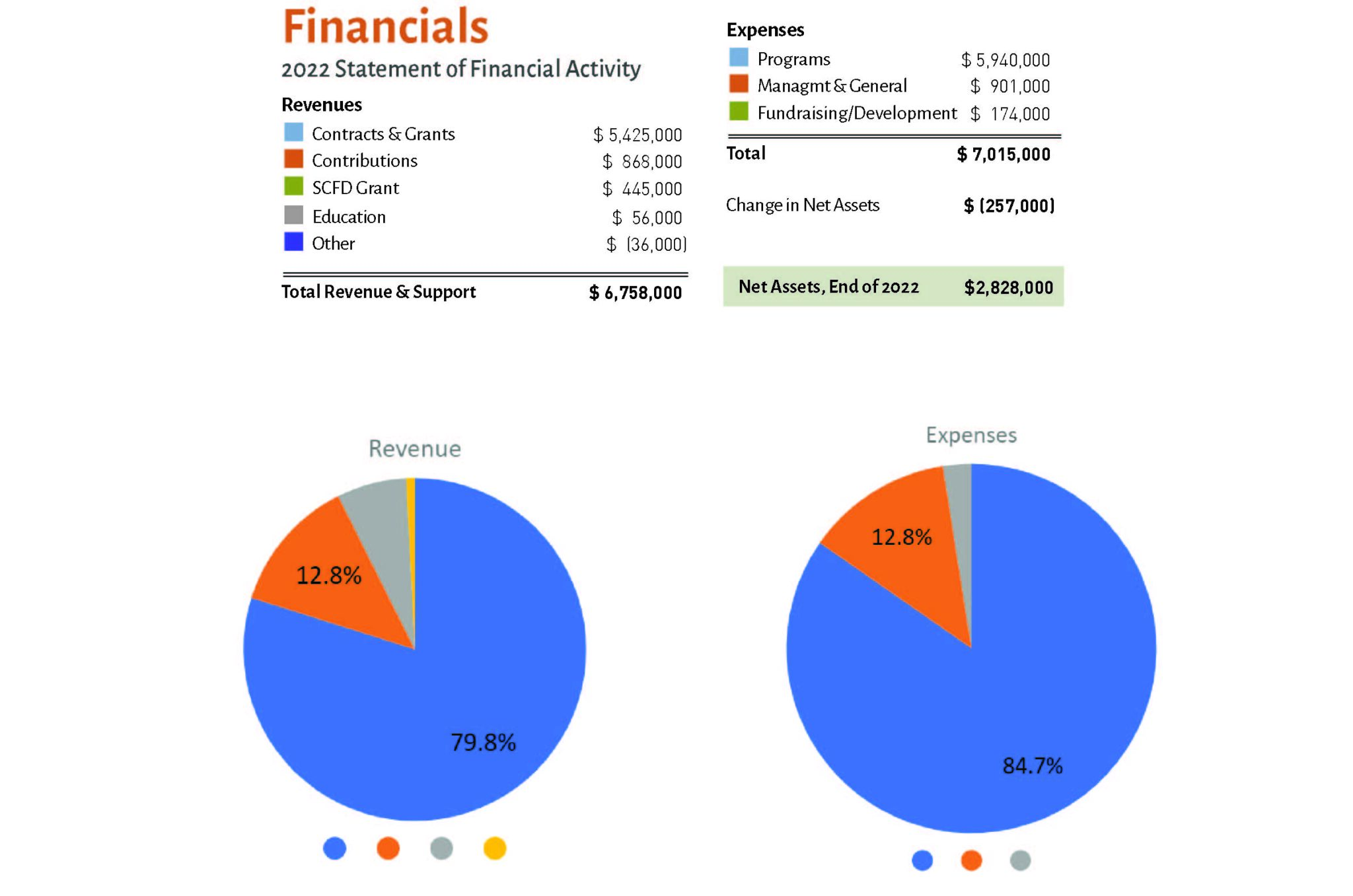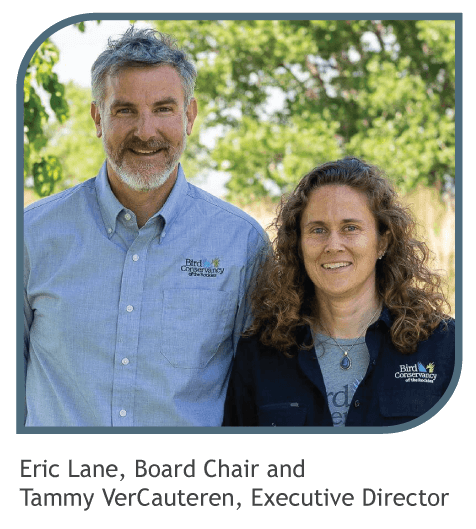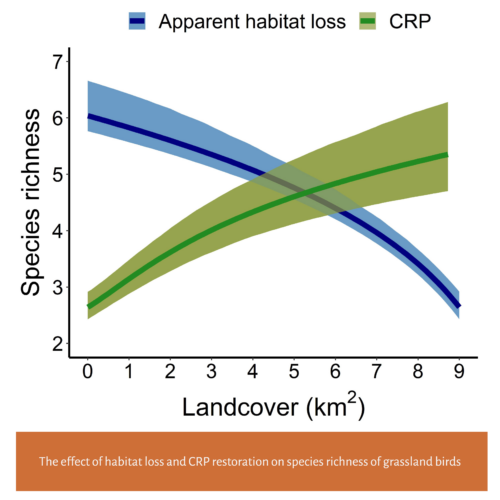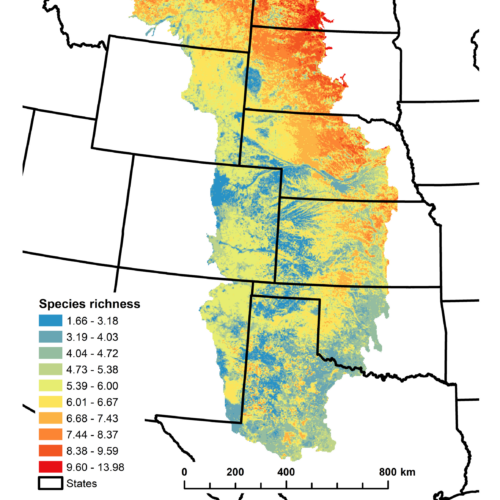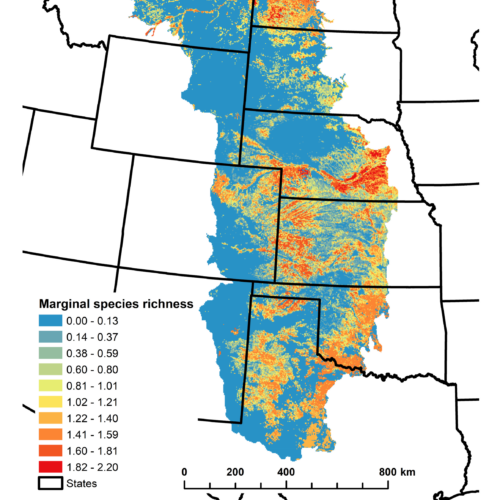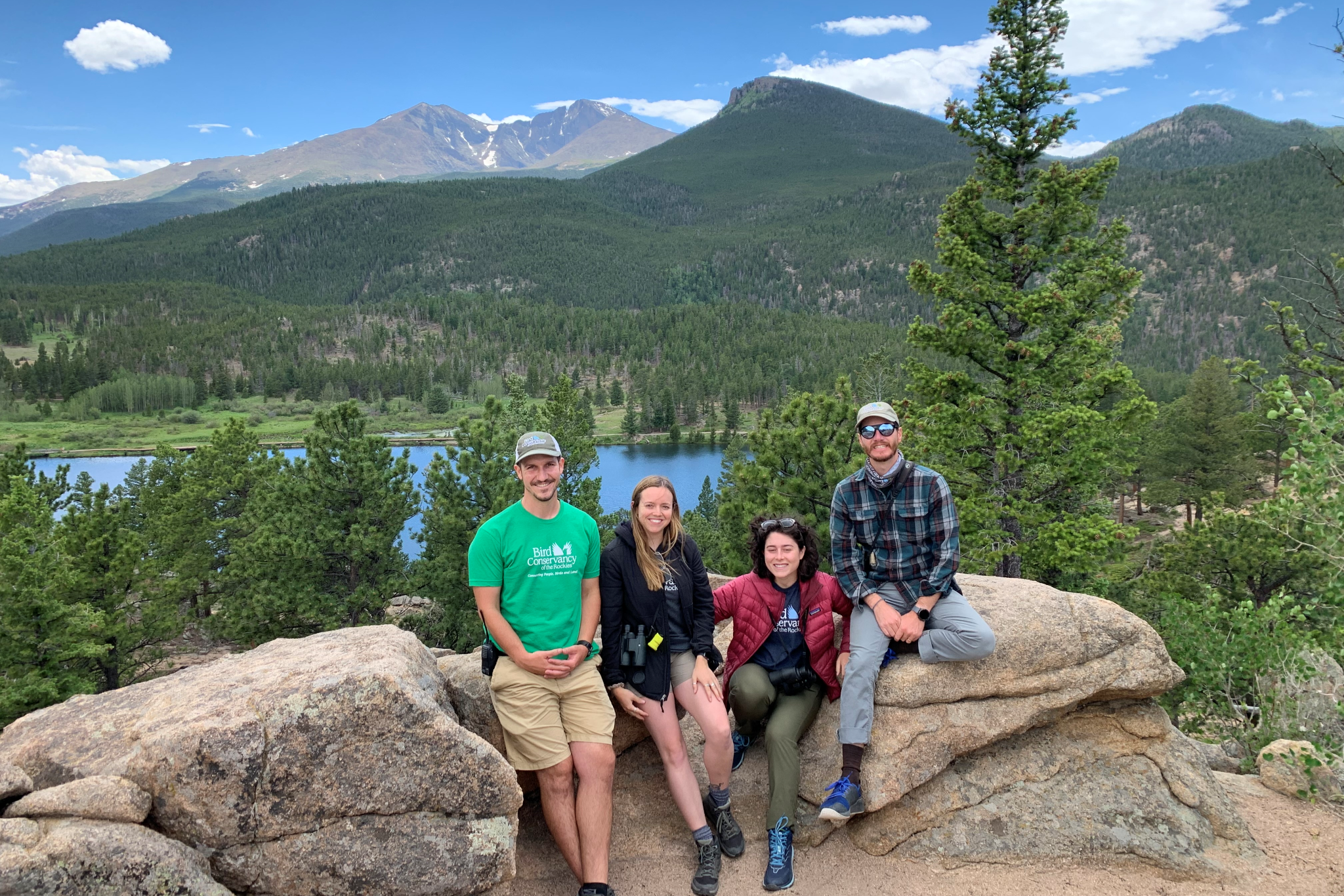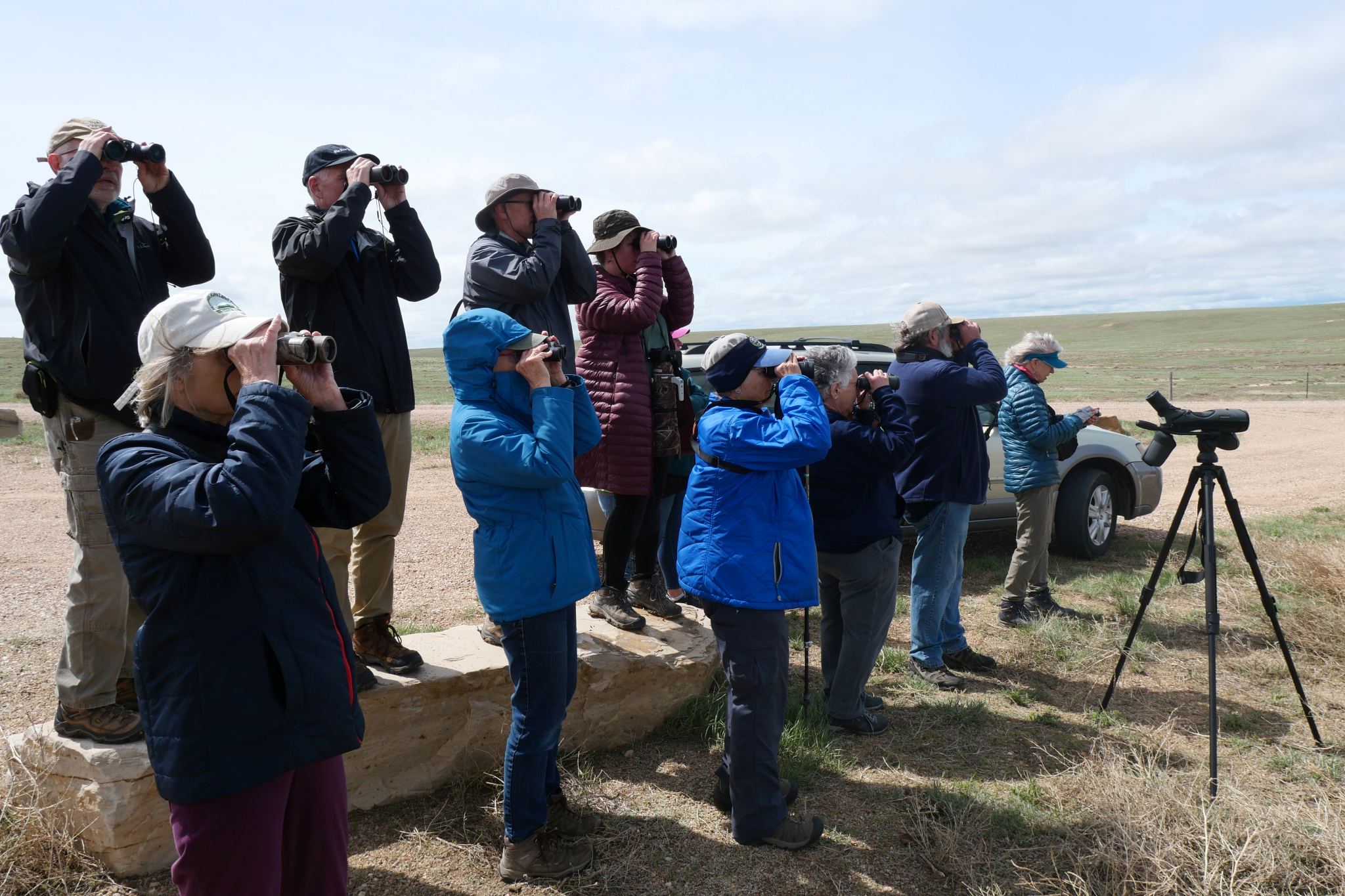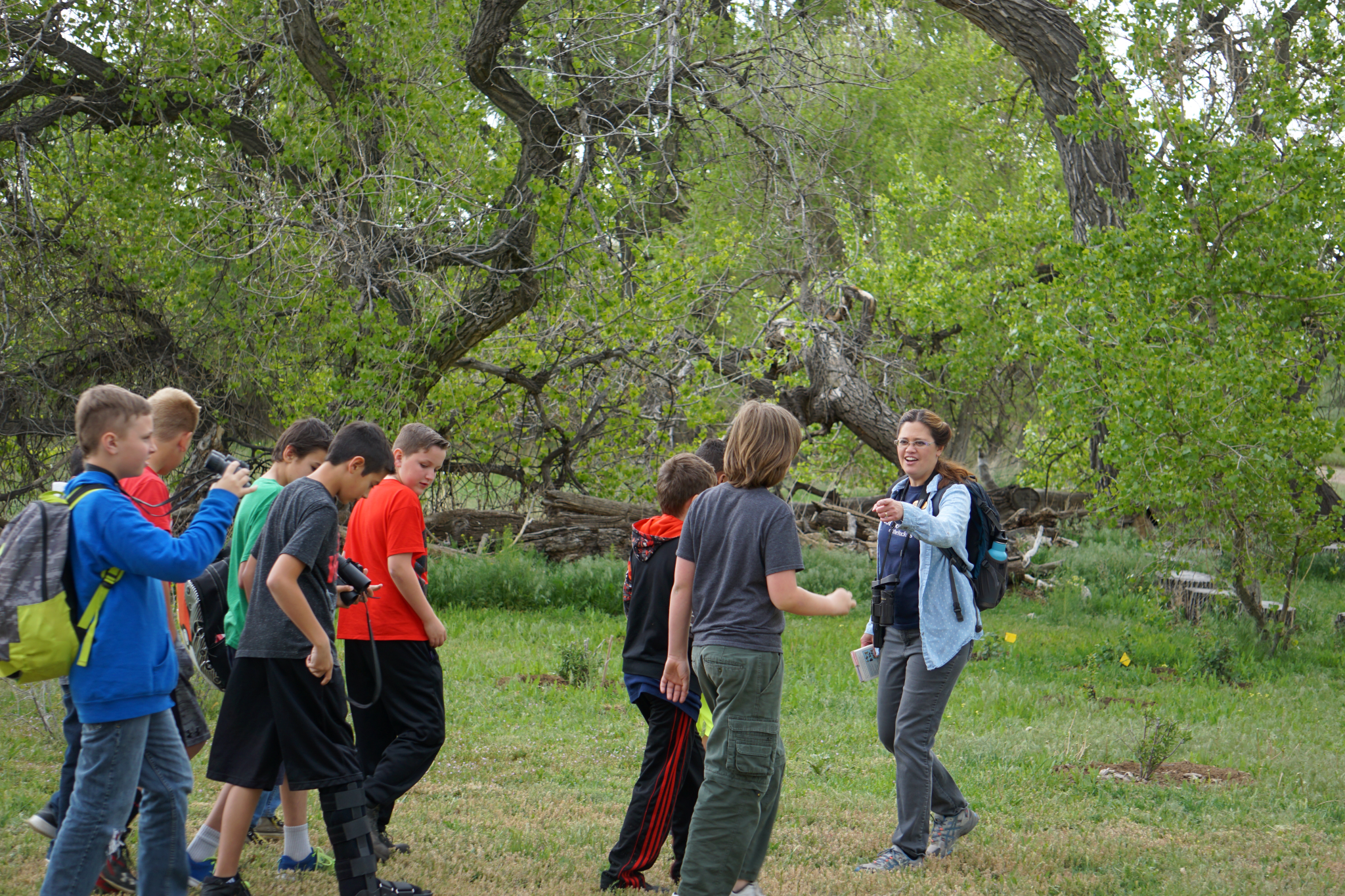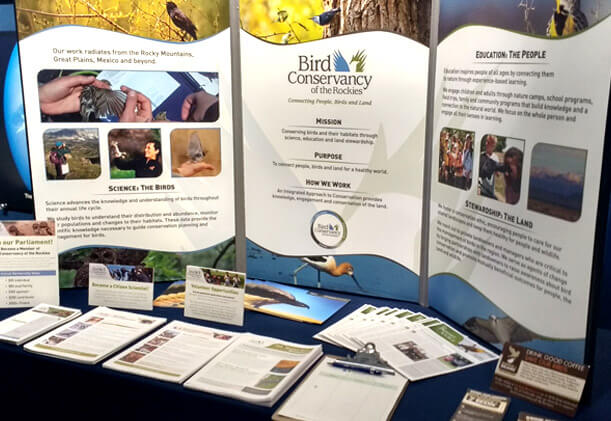BIRD CONSERVANCY OF THE ROCKIES
Message from the Executive Director and Board Chair
Bringing people together for conservation is what we do. Birds bring people and communities together through their migratory pathways. They connect cultures and landscapes, geographies from Mexico to Canada, and grace our skies with their sounds and beauty; they are emblems of what shared responsibility means.
A shared responsibility is what inspired us to catalyze the Central Grassland Roadmap effort including our core values of bringing people together for conservation. Many birds, like the Lark Bunting, spend two-thirds of their life in the southern United States and Mexico. You likely know the sobering statistics for grassland birds: They are experiencing the greatest decline of any group of birds on our landscapes. Unless we change this trajectory, we will not have species such as the Lark Bunting and Thick-billed Longspur gracing our grasslands for the next generation. The urgency is here, but the approach has to change to create durable conservation.
Bird Conservancy of the Rockies catalyzed the Central Grassland Roadmap effort nearly four years ago to do just this. We have been working on grasslands and grassland bird conservation since our inception 35 years ago. Our work is contributing to healthy grasslands and has improved more than 1.5 million acres across northern Mexico and the north/central Great Plains. We have advanced the collective understanding of migratory pathways for grassland birds through geolocators and are helping fill knowledge gaps on limiting factors for survival across their annual life cycles. However, the pressures from development and grassland conversion are creating a loss of 4 million acres per year across our geography.
How can we, together with partners across three countries and multiple Indigenous Nations, collaborate to save our grasslands. It starts with focusing on place— grasslands and what healthy resilient grasslands mean, from soils to water to grassland health to rural communities and wildlife. When we start with place and bring community together to identify priority needs from social to ecological to cultural, we make conservation contagious and ensure it is sustained for the future. The birds will respond as the land and the communities are restored and become healthy and sustainable.
The Central Grassland Roadmap is a paradigm shift for achieving effective bird conservation across a 700+ million-acre landscape. It includes working with partners across three countries, multiple Indigenous Nations, and seven sectors including state and federal agencies, industry, foundations, academia, private landowners, and non-governmental organizations. We are lifting all voices to ensure everyone sees themselves in the future of grassland conservation.
An attendee at the Central Grassland Summit that occurred in Fort Collins in May 2022 said, “I appreciate what you guys do. I like that all interested parties were represented. We all have the same goals in mind. We are making progress. There was a time when the Bird Advocates, and the T&E advocates, and the Ranchers, and the Oil and Gas folks couldn’t meet in the same place without there being heated discussions and conflict, but this meeting proves that we have moved past that and are ready to work together to achieve a common goal. I very much enjoyed the meeting. I’m looking forward to working with you all to save the grasslands.”
You, our partners, supporters, donors and Friends help us be catalysts for change and have made this work and progress possible. The power of people working for a common cause is unstoppable. There is more work to do across our geography including grasslands, forests, wetlands, and urban areas. This collaborative approach defines where we are headed as we move forward our strategic plan for the next five years. Our future includes inviting all voices and knowledge, integrating social and ecological values, and relationships with people.
Thank you for the hope and inspiration you bring.

Tammy Vercauteren,
Executive Director
BY THE NUMBERS
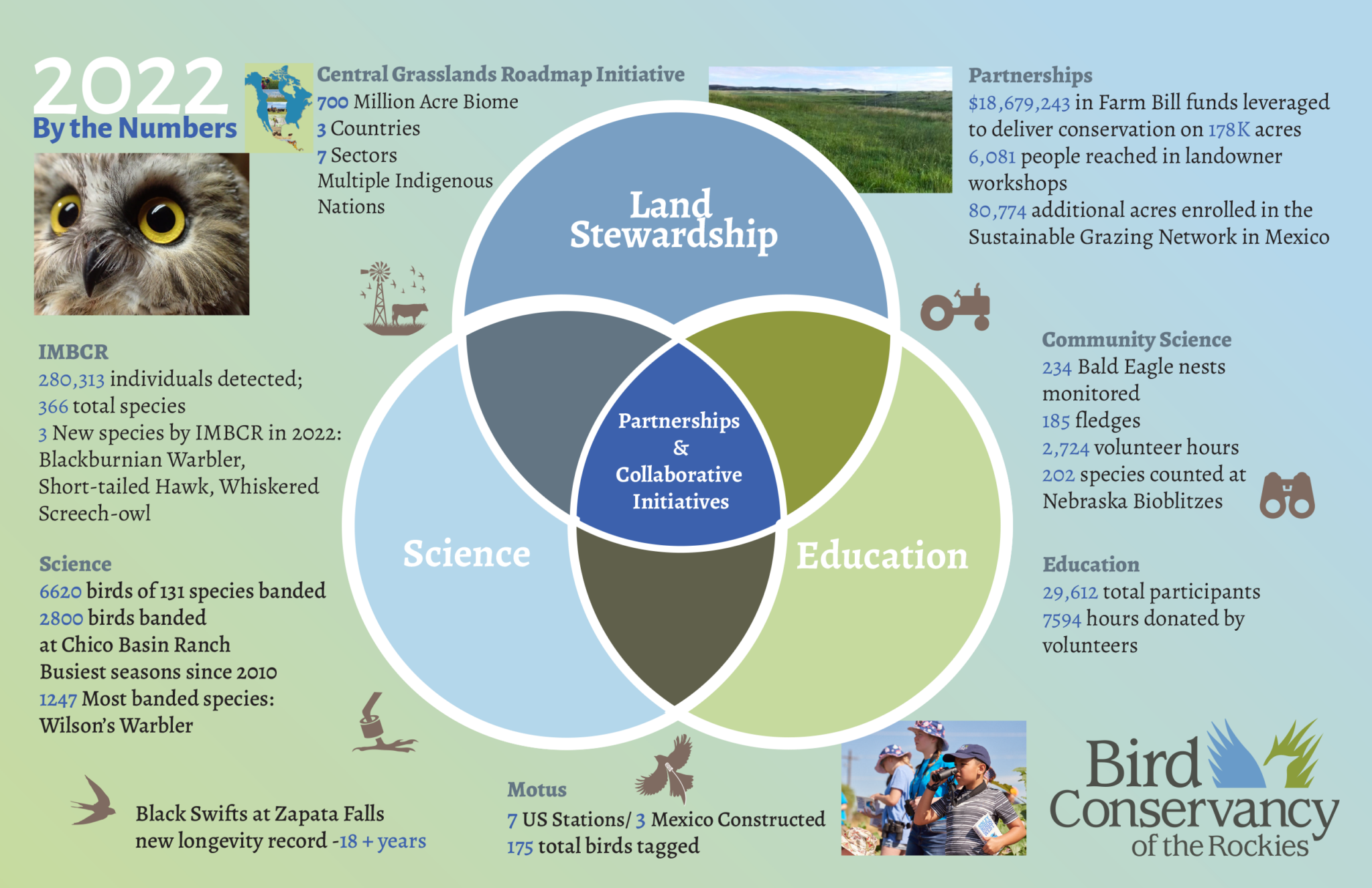
People
Bird Conservancy of the Rockies provides opportunities to immerse children and adults in nature; engaging diverse communities and stakeholders to inspire place-based conservation.
We are:
- building authentic partnerships that honor cultures, knowledge, and values
- increasing equity, inclusivity and accessibility to nature and science
- cultivating communities of conservation leaders, scientists and decision-makers
Birding for All
A primary goal of Bird Conservancy’s Education Team is to help everyone find their unique and meaningful connection to birds. We take pride in our variety of program offerings and it has always been our intention that these programs are welcoming and inclusive of everyone. However, we realized that although being inclusive was our intention, we weren’t being intentional about it in our program design. Saying “all are welcome” was not enough; we needed to re-examine our practices and implement changes that would make our programs truly accessible for all. Through research and training, our educators learned about changes we could make that would reduce barriers to access for people with disabilities and have since worked diligently to integrate these changes. Some of our updates include purchasing adaptive equipment, wording our program descriptions to describe the terrain we will be covering and indicating adaptive equipment will be available, and keeping programs at a slower pace to allow time for everyone to be comfortable and enjoy their time with us.
The unofficial kick-off of our new and improved programming was Birdability Week in October 2022. We hosted several events during the week which culminated in our Birdability Week Celebration. Birdability Week was founded in 2020 by the non-profit Birdability, whose mission is to raise awareness of how to make birding accessible for all. They primarily focus on those with seen and unseen disabilities, but acknowledge that there is a plethora of barriers to birding for many people. Since then, we have partnered with North Metro Community Services, a local day program for adults with disabilities, to provide programming, as well as created monthly Birding for All programs. These programs are open to the public, but are geared toward creating a safe space to welcome people with disabilities to the world of birds. As always, we will continue learning how to best serve our audiences and make our programs welcoming for all!
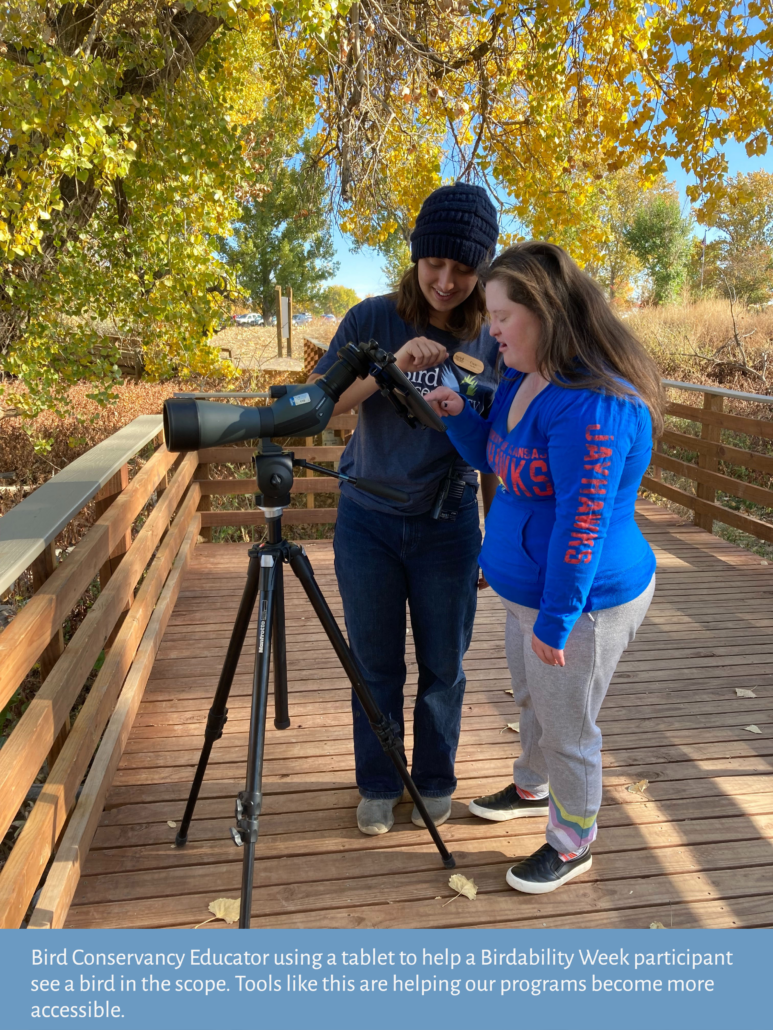
2022 People Focused Highlights
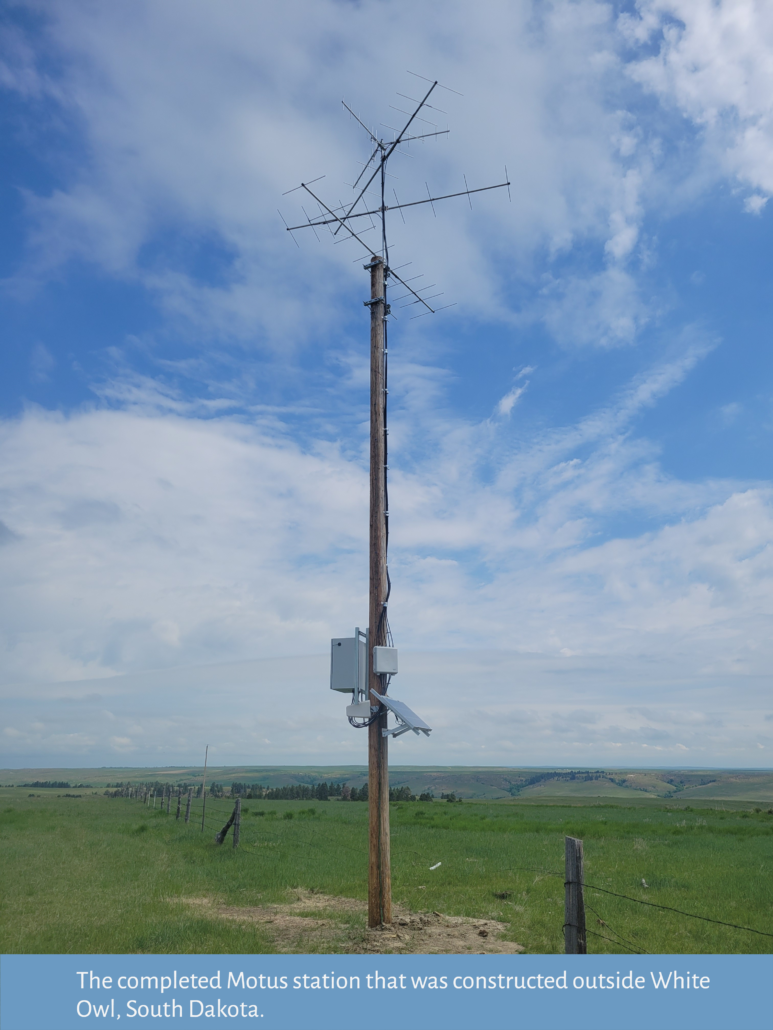
Tracking Migration to Connect People
In June 2022, Bird Conservancy’s Motus team installed a Motus station on a private ranch owned by the Cammack family near White Owl, South Dakota. This work was filmed by a crew from Conservation Media/Cornell Lab of Ornithology to highlight the National Fish and Wildlife Foundation’s Northern Great Plain Program as they fund work to restore, manage, and protect priority species and habitats. Matt Smith (from the IMBCR program) was also filmed, showcasing the role of IMBCR monitoring in grassland conservation. To include both halves of Motus Wildlife Tracking Network, tags and stations, tag attachment was demonstrated with help from four generations of the Cammack family present to witness the work being done as well as release some of the birds. This station was especially memorable, not only for its beautiful grassland viewshed and those who accompanied the install, but for it’s location near a Sharp-tailed Grouse lek!
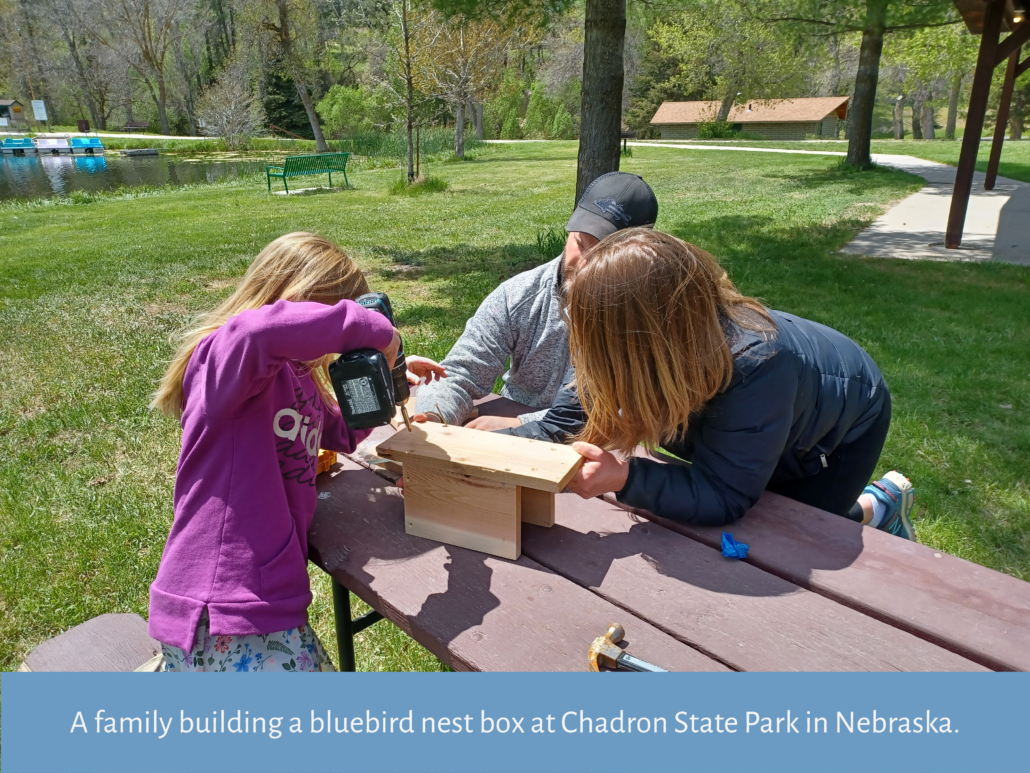
Forming Connections in Nebraska
Empowering Bird Conservancy’s mission in Nebraska throughout 2022, Education Manager, Delanie Bruce and, Private Lands Wildlife Biologist II, Chelsea Forehead partnered to enhance the outdoor and conservation education opportunities and empower the next generation of environmental stewards. Keeping the focal point of people, land and birds at the top of mind, Delanie and Chelsea hosted a nesting box workshop at Chadron State Park in celebration of Nebraska’s Bird Month– which focused on bluebirds. Chelsea spoke to the ecology of bluebirds and the importance nest boxes have had in assisting to maintain the state populations. Delanie and Laura Smedsrud (Environmental Educator) provided instruction and supplies so participants could build their own nest boxes and actively contribute to maintaining bluebird populations. In November, Delanie, Chelsea and Laura came together to host the Pine Ridge Conservation Night, that aimed to give families and landowners access to wildlife and conservation experts for an evening of fun activities. Partners from the United States Forest Service, Nebraska Game and Parks Commission, Natural Resource Conservation Service, University of Nebraska-Lincoln Extension, Pheasants Forever, and Chadron State College Wildlife Club joined Bird Conservancy in providing programming focused on conservation and stewardship. Collaboration between the Education and Stewardship Team representatives in Nebraska helps to further the missions of both teams and that of Bird Conservancy of the Rockies as well.
Birds
Bird Conservancy of the Rockies is leveraging biological and social science to inform management and conservation.
We are:
- Identifying socio-ecological factors affecting bird populations to inform conservation actions
- Identifying and addressing socio-ecological factors that influence adoption and retention of conservation practices
- Co-producing science to monitor the effectiveness of conservation practices
- Interpreting and sharing biological and social science to diverse audiences
State of the Birds Report
Leveraging Data to Recover Grassland Birds
Every 3 years the North America Bird Conservation Initiative releases the State of the Birds report. This important document provides a holistic view of the current status and trends of bird populations across habitats throughout the United States and Canada. The report also highlights key conservations successes and policy initiatives that can improve environmental conditions simultaneously for people and birds. Grassland birds have been and continue to be the most steeply declining suite of species. This year’s report leveraged Bird Conservancy’s expertise in grassland bird science as well as our experience in private-lands conservation to develop a vignette on the state of grassland birds. Working collaboratively with partners, Bird Conservancy developed a map featured in the report that combines information about grassland bird population trends with information about lands vulnerable to agricultural conversion and shrub encroachment. These maps simultaneously showcase the plight of grasslands as well as highlight key conservation opportunities. Specifically, they can help inform where we need to focus conservation efforts to recover grassland bird populations while simultaneously supporting rural economies and human livelihoods. These efforts highlight Bird Conservancy as a national conservation leader in developing impactful conservation delivery solutions that benefit people, birds, and land.
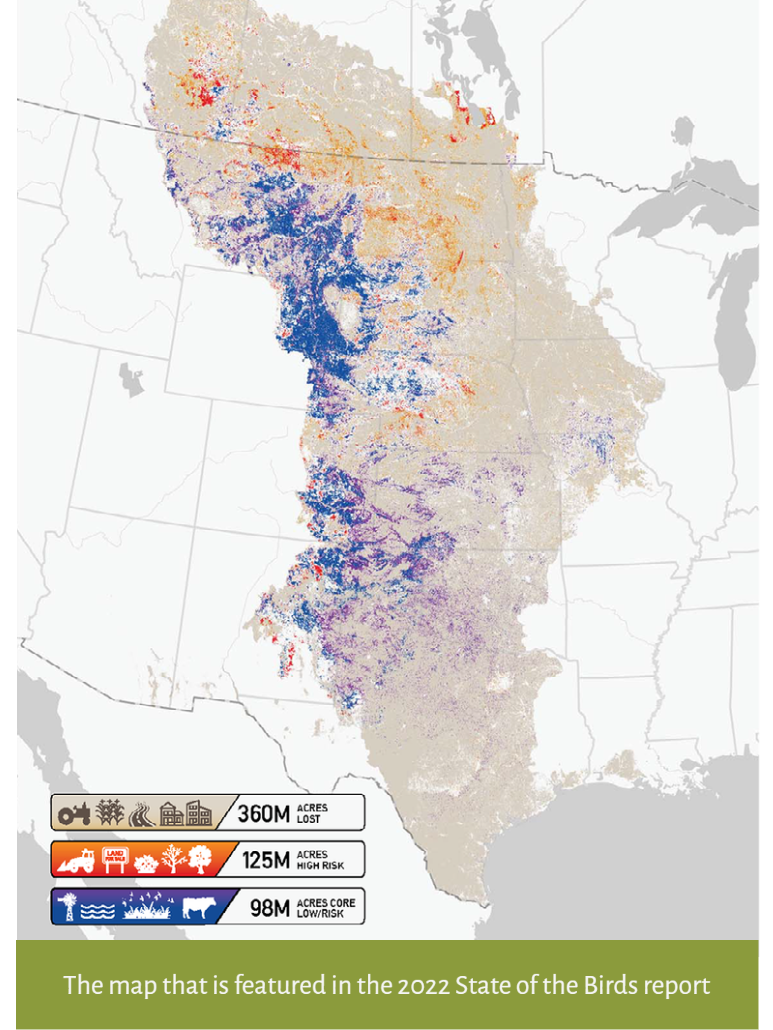
2022 Bird Focused Highlights
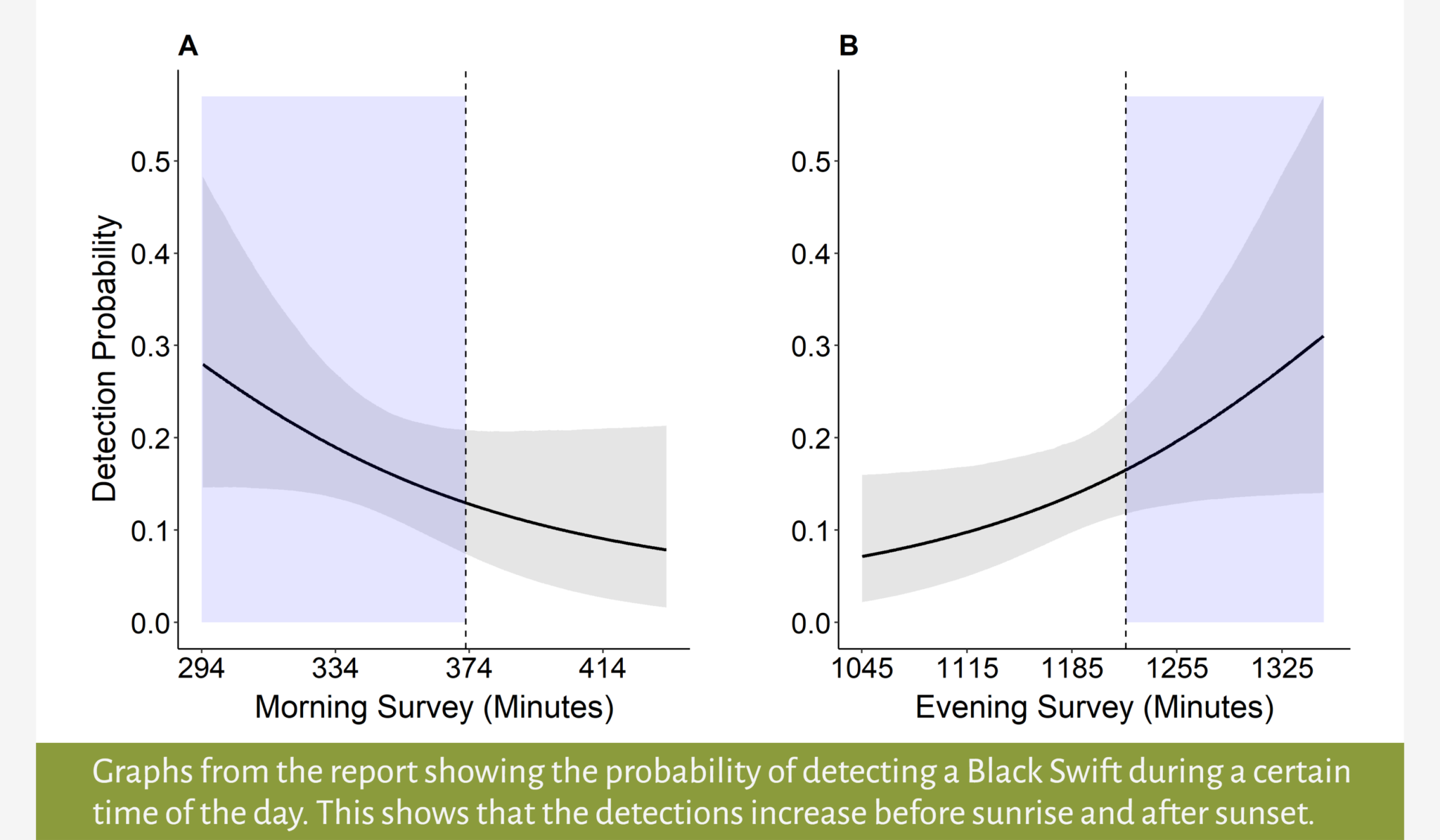
Counting Swifts on the Edge of Darkness
Picture the San Juan and southern Rocky Mountains in late summer, some of the most rugged and scenic mountains of our state. In these mountains a team of biologists attempted to count Black Swifts during twilight hours flying out of dark, wet, rocky ledges along montane, sub-alpine and alpine waterfalls, canyons, and caves, at the interface of wet montane meadows, mixed conifer and subalpine forests. The northern Black Swift is an aerial insectivore of significant continental conservation concern, having experienced range-wide population declines in the US and Canada. Our goals were to develop a sampling design and evaluate factors influencing detection probability and abundance. Biologists surveyed 85 sites with replicate morning and evening visits from July to early September. We detected Black Swifts at 31 sites and estimated mean abundance of 3.5 individuals at surveyed sites. The total population size across Colorado was estimated to be 665 individuals. The extent of potential nest niches, relief, potential shade and amount of moss had strong positive relationships with abundance. Detection probability increased before sunrise and after sunset coinciding with their crepuscular flight behavior. This indicates how important it is to survey during twilight hours to maximize detections. Management for this species will benefit from identifying threats, addressing knowledge gaps and developing conservation priorities. Potential threats to consider include climate warming which will impact snow pack and precipitation, impacting water flow important for Black Swift nesting requirements. Given this species is an aerial insectivore, climate may also impact prey availability by altering insect phenology. Monitoring based on standardized protocols and probabilistic sampling frames is an effective way to increase our understanding of population dynamics.
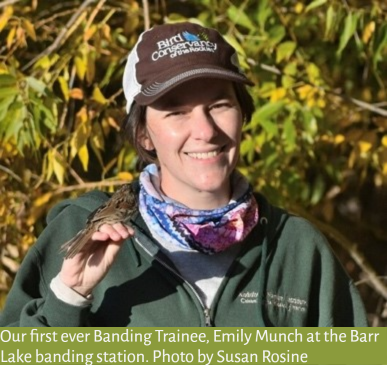
Growing our Bird Banding Team
In recognizing the need to develop further training opportunities for the next generation of biologists, we added a new role to our Barr Lake banding team in 2022; the banding trainee. Our banding trainee helps us run the daily operations of our fall banding station as we monitor migratory birds moving along the Front Range in Colorado. From educating visitors to safely collecting data on birds in-hand, the experience gained through this trainee position is invaluable for early-career biologists.
“My role was to learn how to safely extract birds from mist nets and how to identify, age, sex, and band birds. I’ve been out of college for about a year, and realized I was lacking in bird handling and banding experience. In my 3 months, I gained valuable hands on experience and I am excited to keep refining the skills I gained in future jobs” – Emily Munch, Banding Trainee
Land
Bird Conservancy of the Rockies is building connected and resilient landscapes to support biological diversity and human values.
We are:
- Cultivating a culture of voluntary land stewardship
- Co-producing and implementing scalable community conservation with diverse partners
- Integrating ecological, biological, and cultural data to inform decision making
Conservation
& Community
Private working farms and ranches comprise 70% of the western landscape, and are home to many of our imperiled grassland birds. That’s why, for more than 20 years, our organization has operated a private lands program working alongside landowners and managers to raise awareness for bird conservation needs and enhance habitat at the local level.
Our collaborative conservation landscape spans the central grasslands, from Canada to Mexico, and is fueled by the expertise of a network of strategically-placed Private Lands Wildlife Biologists (PLWBs) in six states. They are members of the community where they live and work. As such, they are a source of support, tools and resources for landowners and partners to enhance the health and productivity of working lands for the benefit of wildlife, people and their bottom line.
Click a pin to learn more about our Stewardship team and field offices
2022 Land Focused Highlights
Battling Cheatgrass: Mapping and Prioritizing Conservation Efforts to Save the Sagebrush Ecosystem
Cheatgrass is an invasive annual grass that threatens sagebrush ecosystems throughout western North America. It creates a dense layer of fine fuels that increases the frequency and intensity of wildfires, and takes away resources from other plants that provide critical habitat for birds and other wildlife. Because sagebrush takes a long time to recover from fires, these changes threaten human livelihoods and are a major habitat concern for wildlife, like the federally Threatened Gunnison sage-grouse. With over 80% of the world’s Gunnison sage-grouse living in the Gunnison Basin of Colorado, cheatgrass invasion poses an ever-increasing threat to the health and integrity of sage-grouse populations.
To prevent the spread of cheatgrass, you first need to know where it is. That’s actually more easily said than done, as cheatgrass is still in the early stages of invasion in the Basin. Bird Conservancy has partnered with U.S. Fish and Wildlife Service, Open Range Consulting and local organizations to map cheatgrass at an unprecedented spatial resolution. With this information, Bird Conservancy scientists will create spatially explicit prioritization maps that help agencies determine where the most cost-effective places are to treat cheatgrass with the greatest chances of success. Partner biologists with the cheatgrass interagency strikeforce will then focus on those targeted areas for restoration.
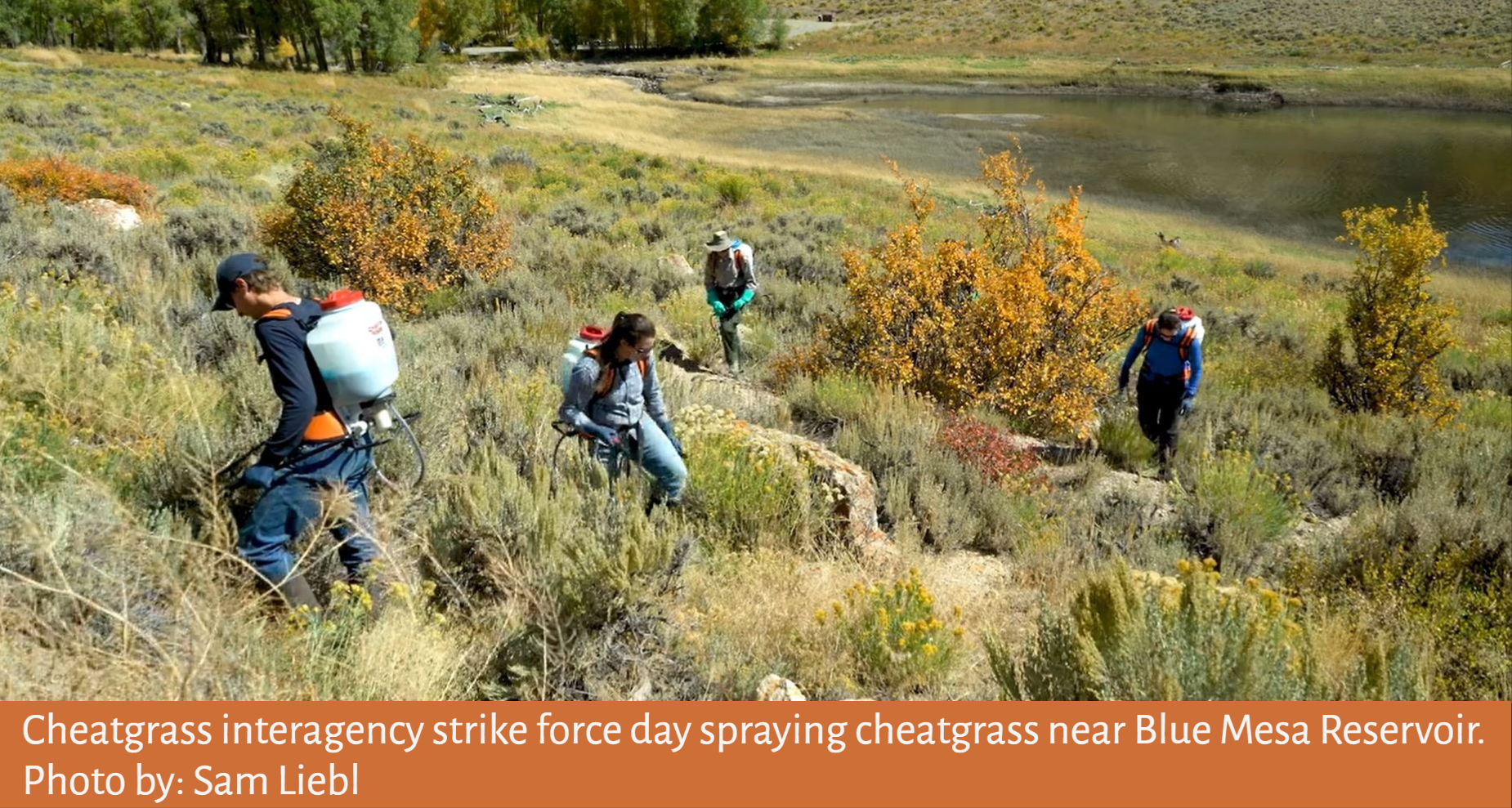
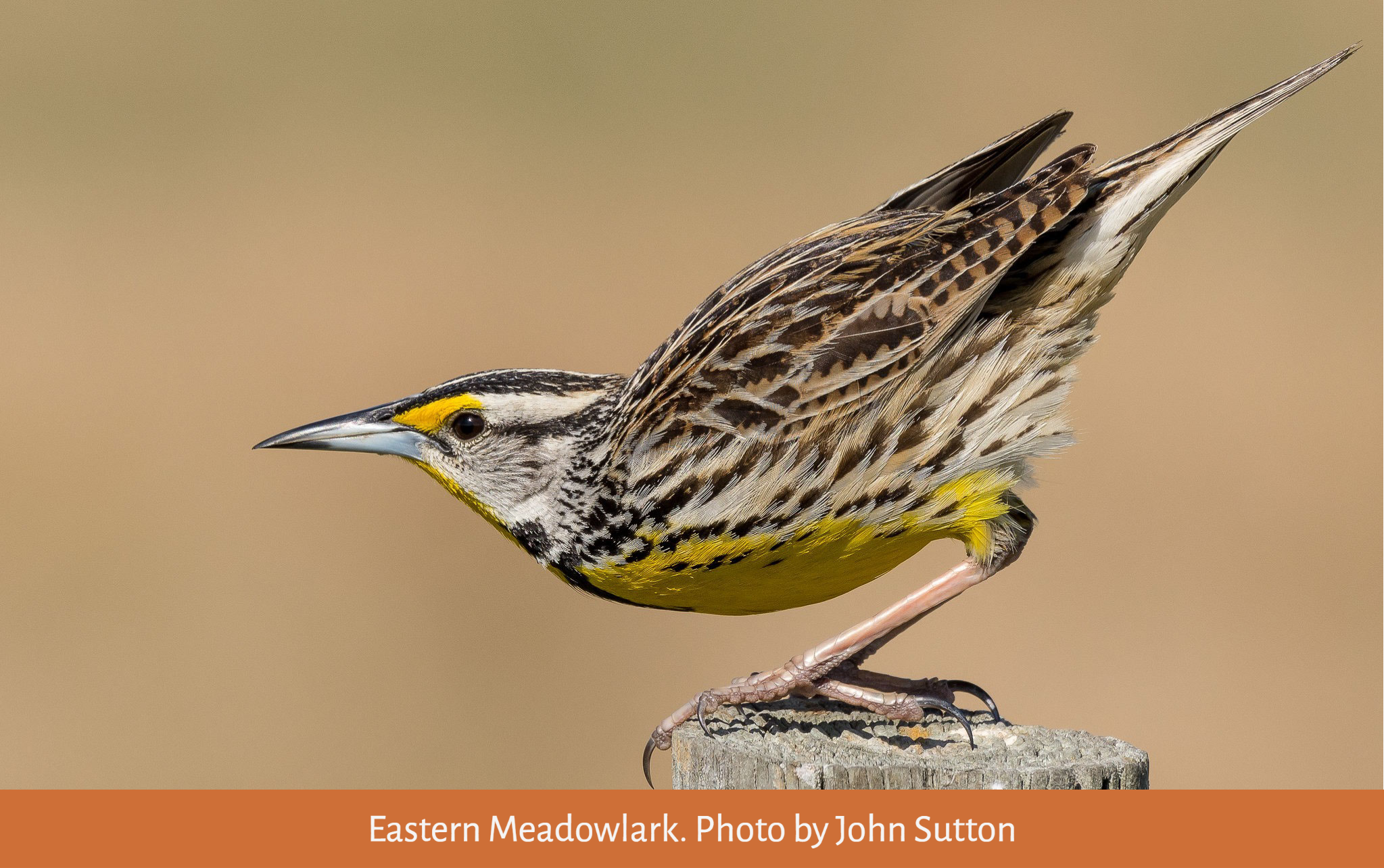
The Conservation Reserve Program supports private landowners and offsets biodiversity loss of grassland birds
The Great Plains, often referred to as America’s breadbasket, is home to 85 species of grassland birds, but there are alarming signs we may be eating our prairie avifauna out of house and home. Modernization of row-crop agriculture between the 1960s and 1980s dramatically increased food production for human well-being. Coincidently, agricultural intensification over this time is the primary driver of habitat loss and biodiversity decline for grassland birds. The Great Plains can be viewed as a social-ecological system with 95% private ownership, which raises important questions of how to balance ecosystem services for improving human well-being and biodiversity conservation, while protecting traditional livelihoods of private producers. In collaboration with the Farm Service Agency, Bird Conservancy scientists published a 2022 study to understand biodiversity benefits from the Conservation Reserve Program (CRP), which provides financial incentives for landowners to take cropland out of production and restore perennial grassland. The study found CRP offset habitat loss from agricultural conversion and conserved 83% of grassland bird biodiversity. Bird Conservancy has several private lands wildlife biologists strategically located along the eastern plains of Colorado focusing their efforts to enroll lands into CRP. Through collaboration with landowners, biologists are building ecosystem resilience in grasslands, enhancing wildlife habitat, and supporting producers to remain viable within their individual operations, while also strengthening rural communities. Working together, the Bird Conservancy of the Rockies’ science and stewardship teams are sowing seeds to balance social well-being and biodiversity.
Click on maps to see them in full screen

Inspiring Future Conservationists Through Connection
Summer Bird Camps are a place for youth to connect with people, land and birds. While this connection can start at our Wild Nestlings Camp (ages 4-5) it is during our On The Wing overnight camp (ages 15-17) where these connections aim to shape the career paths of these teenagers. Throughout the camp we have professionals in the conservation field spend a day with our campers to talk about their path after high school and what led them to the career they have now.
Last summer, our Senior Research Scientist, Arvind Panjabi met our campers in the Endo Valley picnic area in Rocky Mountain National Park to share his story. While Arvind has an amazing story, it was the time he spent with us birding up and down Trail Ridge Road where the connections were made. We scoured the alpine in search of White-tailed Ptarmigan, Brown-capped Rosy Finches, American Pipits and White-crowned Sparrows. The time Arvind spent with these campers will be remembered for a lifetime.
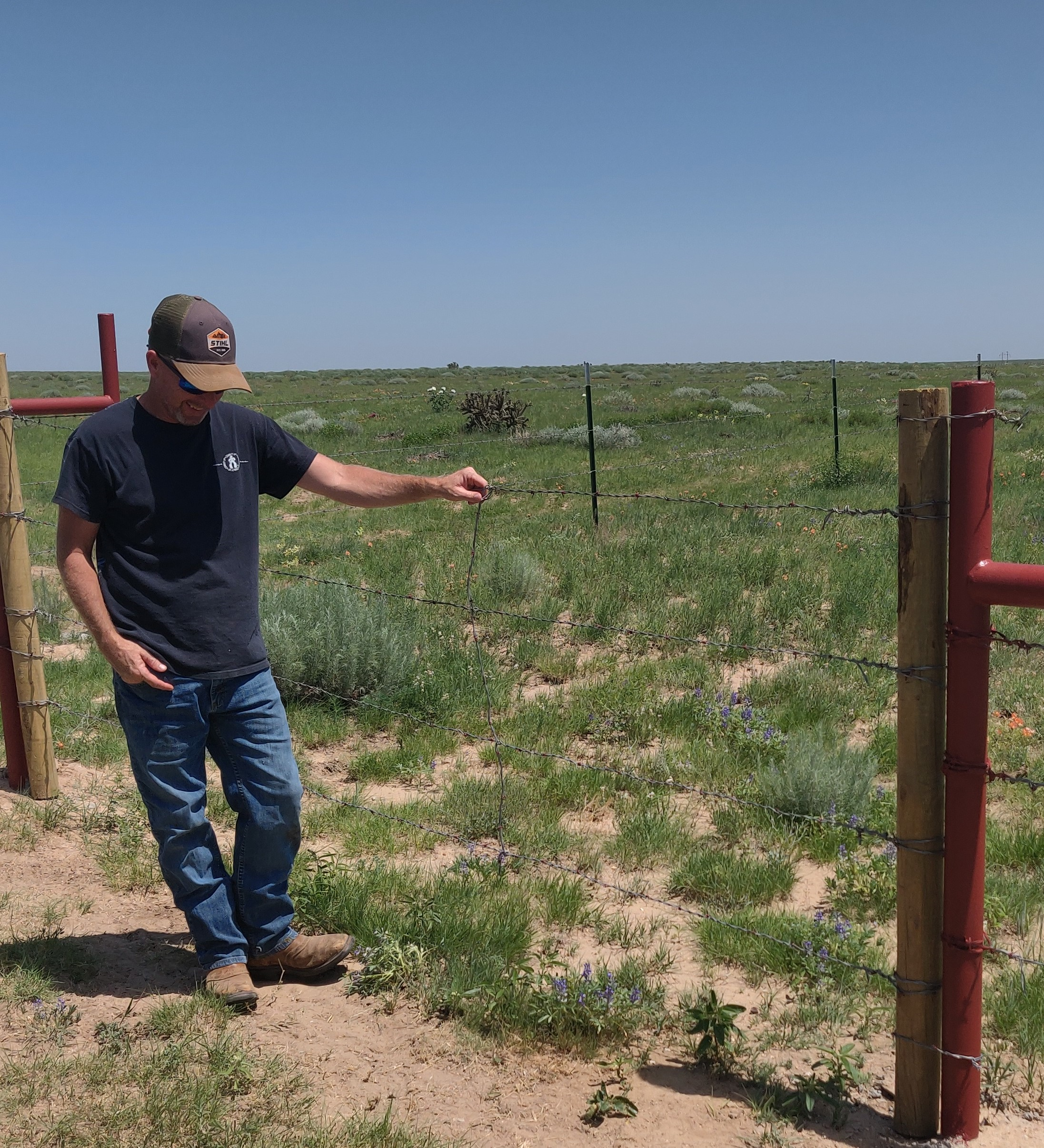
LANDOWNER SPOTLIGHT
Joe Pope
Bar Twenty Ranch
The eastern grasslands of Colorado present unique challenges for ranchers. With high variability in precipitation and temperature, this landscape of rugged cool and warm season grasses has the capacity to support a bevy of grassland birds and to grow healthy cattle. On the Bar Twenty Ranch, owner Joe Pope has partnered with Bird Conservancy and NRCS to make his 3,800 acres as productive and resilient as possible. His legacy began in the 1900s with an original 160 homestead. Farmed until the Great Depression, when the ranch switched to cattle, the Pope Family has grown the ranch into a beacon for wildlife and a successful cattle operation. Bar Twenty was named after Hop Along Cassidy and the Bar-20 Ranch from the original Clarence Mulford stories. The current Bar Twenty Ranch is adapting to drought and a drier climate through improvements including waterlines to take pressure off of ponds and springs, and to re-organize grazing into a more sustainable rotational system.
Key to the ranch’s success is managing it both for wildlife and cattle. “For the land, it’s the smart thing to do,” Joe says. The overarching goal is a healthier rangeland that produces cattle and supports wildlife, including plovers, bluebirds, and ducks. The ranch improvements all started with installing waterlines with NRCS, to reduce reliance on ponds and springs, but over several years, he embraced more and more practices to improve his rangeland. The latest EQIP project, which he began with Ryan Parker, built outused fencing to protect Kramer Creek and the ponds in the area, giving a refuge for everything from leopard frogs to Green-winged Teal to Grasshopper Sparrows. With new water sources and cross fencing, he is able to implement rotational grazing. Between refuges and increased rest periods, the ranch supports more deer than he’s ever seen on the property before and provides habitat for all the animals that also call the ranch home.
Looking forward he’d like to keep improving the landscape for wildlife, removing invasive tamarisk and replacing them with native trees and shrubs to support wildlife. Thank you for partnering with Bird Conservancy, Joe, we look forward to our continued work together on Bar Twenty Ranch.
Partnerships
Bird Conservancy of the Rockies is catalyzing and engaging in collaborative initiatives that solve conservation problems at scale.
We are:
- Convening and supporting diverse initiatives to stabilize and recover bird populations
- Leading paradigm shifts in conservation delivery, resourcing, and participation
- Building and engaging in programs that address community health, well-being, and environmental justice
2022 Partnership Highlights with Colorado Parks & Wildlife
Education Partnership
Bird Conservancy of the Rockies got its start sharing an office with rangers at Barr Lake State Park over 35 years ago. In that time, we have worked with several park managers but over the last 10 years we have had the privilege of working with Michelle Seubert, Park Manager, and her exceptional team of staff and volunteers. Bird Conservancy’s Education Team works nearly in tandem with Michelle year-round on community outreach programs and events. We make a great team that is always willing to lend one another a hand and fill in gaps wherever needed.
Recently, we have been working together to make the park and the programs offered there more accessible to birders living with seen and unseen disabilities. Last year we launched Birdability week which is a week of programming specifically tailored to people with disabilities and having access to the parks track chairs and shuttles helped us reach an even broader audience. Working together we are able to provide more high quality opportunities for all people in our community to connect with nature!
Science Partnership
Colorado Parks and Wildlife continues to be a key partner collaborating on several projects with Bird Conservancy’s science team. Bird Conservancy and Colorado Parks and Wildlife are currently partnering on projects monitoring Bald Eagle nest success throughout Colorado, a statewide Black Swift assessment, and the Integrated Monitoring in Bird Conservation Regions program (IMBCR). Liza Rossi spearheads many of these efforts and is a core partner of the IMBCR program. Liza works tirelessly collaborating with IMBCR partners and is a central partner working to strengthen the IMBCR program.
“Colorado Parks and Wildlife works with Bird Conservancy of the Rockies on several projects including IMBCR, a statewide black swift assessment, and supporting private lands biologists. As CPW’s Bird conservation Coordinator, I really value the IMBCR program to generate trend estimates for many of our avian species of greatest conservation need. Partnership funding and collaboration among CPW, the U.S. Forest Service, Bureau of Land Management, and Bird Conservancy have provided for 13 years of statewide IMBCR coverage, which is an invaluable resource for conservation planning.” – Liza Rossi
We are grateful for the support and resources that Colorado Parks and Wildlife provides to Bird Conservancy of the Rockies Science team. Together we are providing population, density, occupancy, and trend information for over 230 species in Colorado through the IMBCR program.
Stewardship Partnership
In 2022, the Stewardship Team further strengthened our working relationship with Ray Aberle, the Colorado Parks and Wildlife Private Lands Program Manager. Ray is a wealth of information and resources, a great strategic thinker, and a valuable contributor to many of our upper-level hiring panels. We are currently working with Ray to enhance the quality of our Stewardship program, including a more robust training process for new field biologists.
“The conservation value delivered by Bird Conservancy of the Rockies through their Stewardship team extends across the nexus of land, people, and wildlife. As essential partners in habitat delivery, conservation education, and outreach and relationships with the agricultural producers of our State, BCR is a significant multiplier to CPW’s efforts. Quite simply, we couldn’t accomplish our conservation goals without their partnership.” – Ray Aberle
We are also grateful for the myriad resources CPW provides in the form of Area Wildlife Biologists and District Wildlife Managers. Stewardship’s team of Private Lands Wildlife Biologists connect regularly with CPW field personnel for site evaluations, landowner contacts, and management recommendations. Working together, we have been able to identify, design, and implement several large forest and wetland restoration projects throughout the state in 2022, with work continuing and more opportunities developing in 2023. Stewardship is very thankful for CPW’s continued partnership and we look forward to their continued support in the coming years.
Bird Conservancy had a great year in 2022. Watch the video below to hear from the leadership team about our successes in 2022 and plans for 2023. Thank you for your support.
ABOUT US
A People-Centered Conservancy
Building and Cultivating Partnerships
2022 was another great year for Bird Conservancy of the Rockies. We are seeing an increase in our partnership agreements and support as well as foundations and individual dollars. The combined investments ensure our resiliency as an organization and bolsters our abilities to conserve birds and their habitats and be a leader for conservation.
We just completed our new strategic plan which continues to emphasize the integration and application of our core disciplines in science, education and land stewardship. It also highlights our catalyzing role with new initiatives that bring people, birds and the land together.
At the end of the day, people will decide our future so our plan emphasizes the role and inclusion of people from rural to urban, Indigenous to multi-cultural and all identities. We will continue to inspire, engage and ensure a future where we all feel welcome, included and connected to the land, and have a sense of shared responsibility to each other and our amazing wildlife.
Thank you for your investment, confidence and support. Together we make the future bright and the world a better place for people, birds and the land.
2022 FINANCIALS
